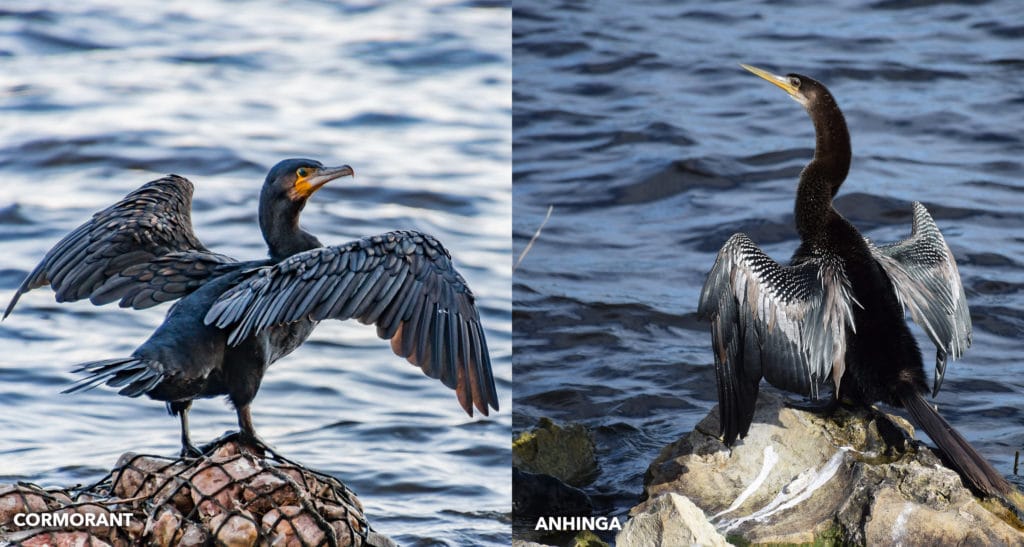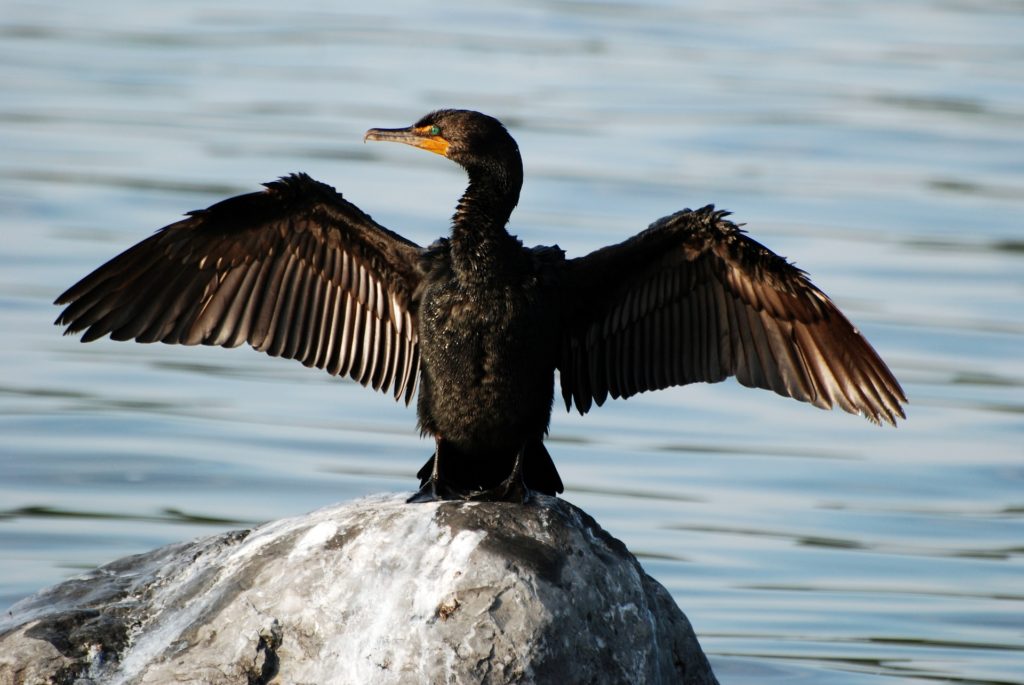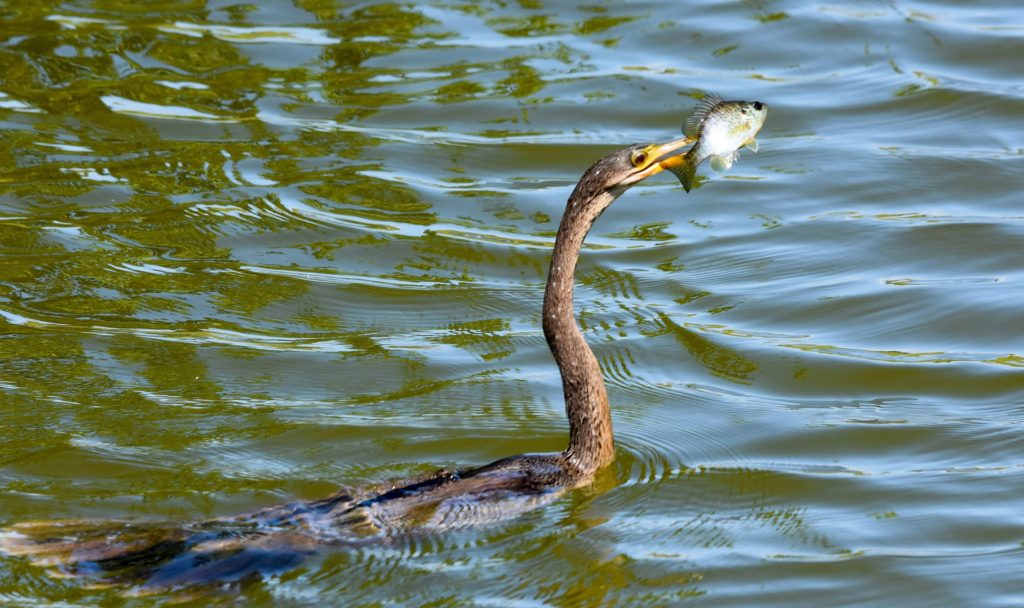“Look it’s a cormorant… or is that an Anhinga?”
Anhingas vs. Cormorants
You’ve probably shared this same experience in trying to identify the large black bird on the shoreline with its wings spread out drying in the sunlight.

Battle of the Birds
We call it the battle of the birds! Well, maybe I just made that up, but the identification challenge, “anhingas vs. cormorants” is a fun little game we play as a family whenever we see either of these two common SWFL birds.
The Clear Identifier
I’m going to skip to the good part… how can you quickly tell the difference between anhingas and cormorants? By looking at the shape of the beak or bill!
Anhingas have a sharp, pointed bill.
Cormorants have a bill that curves downward.
There you have it – the difference between an anhinga and a cormorant! We remember it with the letter “c”, curve = cormorant.

Anhingas vs. Cormorants – Other Identifiers
Besides the bill, there are other ways to determine if a bird is a cormorant or anhinga. Anhingas also have a slightly longer neck and tail feather than the Double-Breasted Cormorants we see here in SWFL. You’ll notice the tail feather of the Anhinga when they are in flight, it spreads out like a turkey tail feather, which is how they’ve also earned the nickname “water turkey.”

What’s With the Wings?
Whether it’s a cormorant or anhinga, they both display similar behaviors after hunting for food in the water. You’ll see them perched along the shoreline with wings outstretched drying their feathers before taking flight.
Unlike ducks and other “water birds,” anhinga/cormorant feathers don’t have the same oil texture, making their feathers less waterproof and heavier to fly with when wet.
Cormorant vs. Anhinga – Difference in Swimming
While this may seem like a limitation, having heavier feathers actually helps when hunting underwater. You’ll notice the Anhinga swims slowly with its head poking out of the water looking very much like a “water snake” or snake bird – another fitting nickname.
Cormorants, however, are more powerful swimmers. You’ll see them diving down (like a duck) from the surface of the water and using their webbed feet to swim deep and catch larger fish. It’s a unique sight to watch them hunt underwater! (I haven’t witnessed it while underwater myself, but the YouTube videos are certainly cool to watch). Watching them swim is another way to identify if it is a snake bird vs. cormorant.

Taking Flight – Cormorant vs. Anhinga
One last identifier in the battle of anhinga vs. cormorant is how the two vary in their flight capabilities. Anhingas are able to soar through the sky, using a flapping motion in between soars to get where they want to fly. Whereas, cormorants are unable to soar, so you’ll see them flapping throughout the entire flight. This helps the cormorant more easily take flight from the ground vs. anhingas, which require a taller object to take off and soar through the sky.

I hope you found this information interesting and can enjoy identifying anhingas vs. cormorants from now on. This isn’t the only “battle of the birds” now that I think of it. There’s a common misidentification between the Eagle and the Osprey as well. I’ll save that for another blog and link it here once it’s published.
Click here to see a guide to Florida bird species from Florida’s tourism site: VisitFlorida.com.
Click here to see our other blog posts about birding in Florida.
